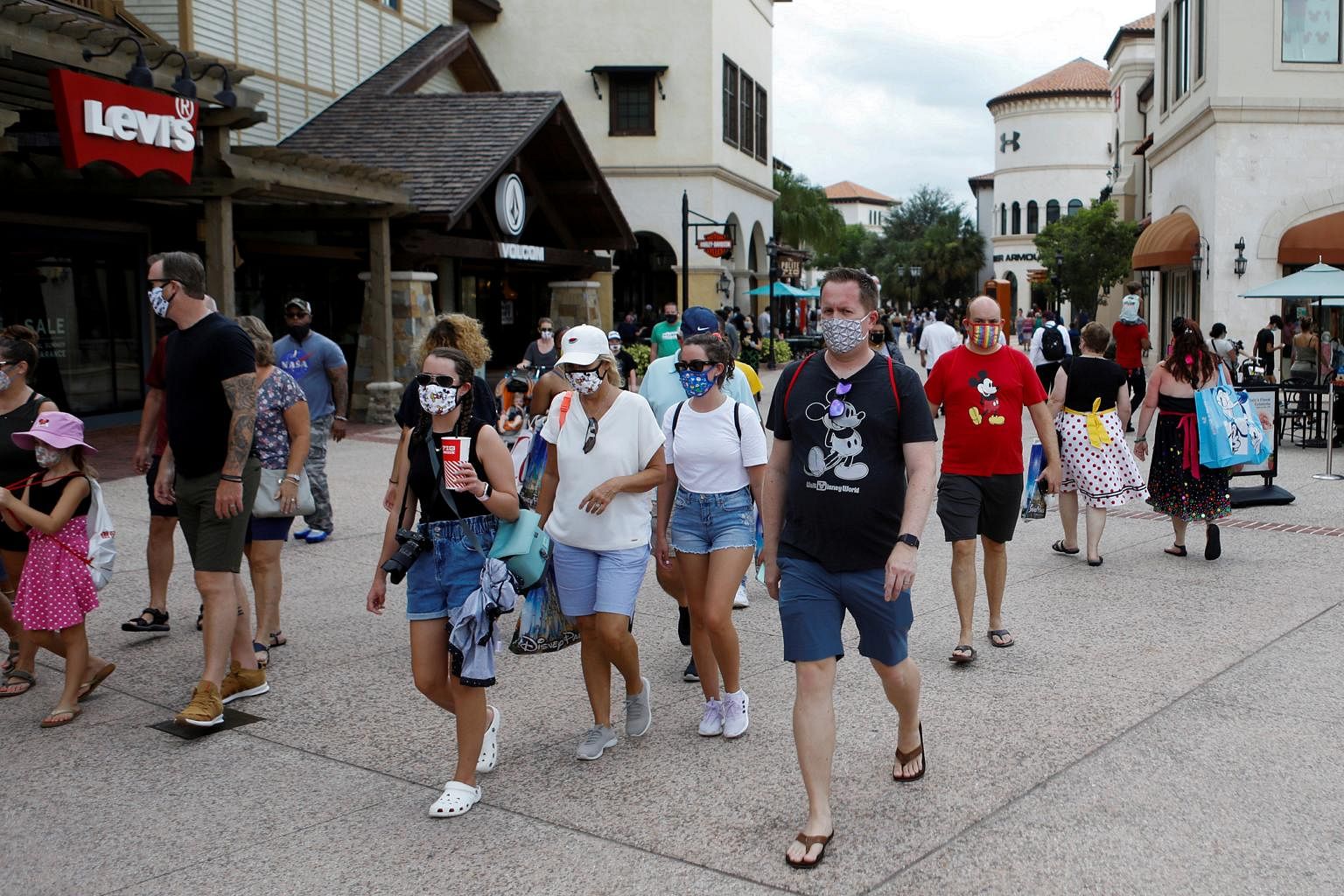COVID-19 SPECIAL
How the US bungled its coronavirus response
Sign up now: Get ST's newsletters delivered to your inbox

A population frustrated with weeks of lockdown spilled out and mingled, often without face coverings, and gave the coronavirus a boost.
PHOTO: REUTERS
Follow topic:
WASHINGTON - Maryland Governor Larry Hogan on Thursday (July 16) became the first Republican politician to openly, via an op ed in the Washington Post, flay US President Donald Trump's response to the coronavirus pandemic.
Mr Hogan's tale points to fundamental underlying reasons for the United States' failure to curb the spread of Covid-19 - its decentralised nature, lack of trust in federal government, toxic political and ideological divisions, and, in some quarters, distrust of science.
DECENTRALISED AND DOWNPLAYED
South Korea's President Moon Jae-in helped Mr Hogan find and buy a planeload of half a million test kits, which landed at Maryland's Baltimore-Washington International Marshall Airport on a Korean Air plane after a 14-hour flight from Seoul.
It was April 18. The coronavirus had by then infected 12,308 Marylanders and killed 463 of them.
"Across the country, my fellow governors were desperately pleading for help on testing," Mr Hogan wrote. "But in early April, Mr Trump said it was the states' job."
Earlier, President Trump downplayed the threat. Asked about it in Davos, Switzerland, on Jan 22, he told CNBC anchor Joe Kernen: "We have it totally under control."
Eight days later, on Jan 30, the World Health Organisation declared the outbreak a public health emergency of international concern.
"The President downplayed the outbreak's severity and... the White House failed to issue public warnings, draw up a 50-state strategy, or dispatch medical gear or life-saving ventilators from the national stockpile to American hospitals," Mr Hogan wrote.
"Eventually, it was clear that waiting around for the President to run the nation's response was hopeless," he wrote. "So every governor went their own way, which is how the United States ended up with such a patchwork response."
TRAVEL BANS INADEQUATE
On Jan 31, as Chinese health officials reported approximately 10,000 confirmed Covid-19 cases, the White House banned the entry into the US of all aliens physically present within the People's Republic of China, excluding Hong Kong and Macau. President Trump has touted this ban as a critical intervention that saved lives.
It may have saved some lives, experts concede. But travel entry records and aviation data obtained by AP showed that nearly 8,000 Chinese nationals and foreign residents of Hong Kong and Macau entered the US on more than 600 commercial and private flights in the first three months after the ban, so it was far from perfect.

A population frustrated with weeks of lockdown spilled out and mingled, often without face coverings, and gave the coronavirus a boost.
PHOTO: REUTERS
The US also restricted travel from Europe on March 13. But that ban came too late - by March 15, community transmission was already widespread in New York City, according to a new report by the US Centres for Disease Control and Prevention (CDC).
TEST KIT, FACE MASK FAILURES
In early February, a batch of test kits manufactured for the CDC were found to be contaminated and not working. It took weeks to make a new batch. The US lost precious time in tracking the spread of the coronavirus.
The federal government told the general public that face masks would not help stop the spread of the coronavirus - advice that ran counter to the experience of many countries in Asia.
The real reason for this advice, which was not clear in official announcements, was that a run on masks would deprive those who needed it most - front-line health and medical professionals who were labouring in crisis conditions with critical shortages of personal protection equipment (PPE).
President Trump's invocation of the Defence Production Act in early April did ramp up production of PPE and life-saving ventilators, but it could have been done much earlier.
The result - the public was misinformed about the efficacy of masks. Now, officials have done a complete turnaround and advocate masks, but there is still no federal, countrywide order, and it is still up to individual states.
POLITICS AND CONSPIRACY THEORIES
The President himself wore a mask in public for the first time only on July 11 when he toured Walter Reed National Military Medical Centre.
The toxicity of the political divide has become evident, with right-wing conservative Trump supporters deriding the wearing of masks - and any restrictions - as authoritarianism. Large swathes of the US population have been very late to adopt masks, and in many cases still have not.
And on Thursday, White House Press Secretary Kayleigh McEnany explicitly said that "science should not stand in the way" of reopening schools.
OPENING UP TOO SOON
Compounding all the errors and negating the small successes has been the fact that several states, eager to get back to business, had opened up too soon. This meant that a population frustrated with weeks of lockdown spilled out and mingled, often without face coverings, giving the coronavirus a boost that has seen hospitalisations skyrocketing again and some states ordering refrigerator trucks to serve as makeshift morgues.

